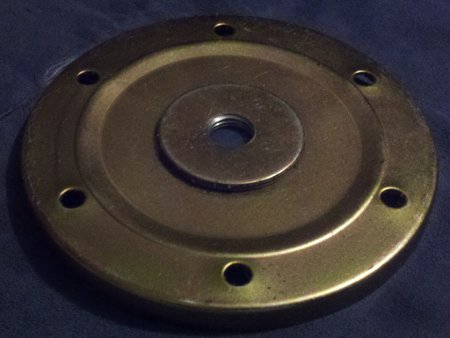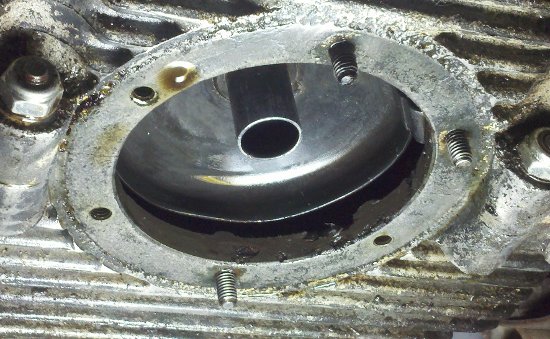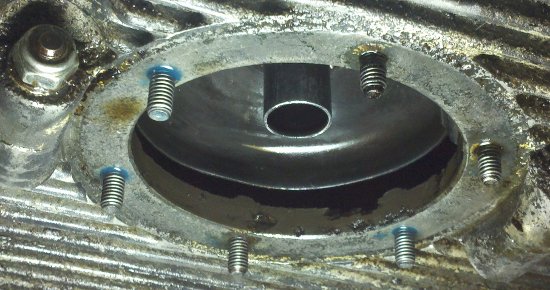Owning a vintage car is like owning a (non-new) house. You always have a seemingly-infinite list of stuff that you need to fix that the previous owner left for you. My vintage Beetel is certainly no exception. One I've been ignoring until last week was the three oil sump plate studs not in place in the bottom of the engine.
The bottom of the oil sump in the engine is a round hole that's
covered with a plate like this when the engine is all together:

The six holes in its rim (should) slide over studs that stick out of
the rim of the opening in the bottom of the engine. The hole in the
center of the plate is where the oil drain plug goes.
The oil drain plug is removed to drain the oil. However, it's very important that every once in a while you remove the plate itself and the oil screen that goes on top of it, to remove debris and sludge that accumulates at the oil pickup point. More about this in a later post. The point is that it's important to be able to take this plate out periodically.
The problem with my car is shown here:

Three of the studs weren't fastened into the engine. You can't just
have nothing there or oil won't stay in; so you instead attach the
plate with studs with a cap nut on the end, or else a bolt of the same
threads. The problem with doing it that way is that the studs are
steel. They're designed to have (steel) nuts put on and taken off
lots of times, so a steel stud sticking out of the engine is fine; the
stud takes the wear. The engine case is made of magnesium alloy,
which is fairly soft, and so repeatedly using the stud holdes as bolt
holes, you'll eventually strip out the holes.
To get the studs to stay properly, you have to use a liquid called "lock tight". It's almost like a metal adhesive; it's like a cold weld. "Blue lock-tight" is a weaker weld, so you can remove the part later with tools. The problem with lock-tight is it won't work in the presence of other liquids; they must be dry. Unfortunately, the oil sump has oil in it (no surprise).
So last week I spent an evening under the car with paper towels and
Q-tips cleaning out the stud holdes. I got as much oil out from in
and above the holes as I could, then I used mineral spirits on the
Q-tips in the holes to get the last of the oil dissolved. Then I
lock-tighted three studs into the empty holdes, and Voi-la:

You can see the blue stuff around the bases of the newly installed
studs. I'm happy to report that I was able to torque down the oil
sump plate, and the studs stayed in place, so that's a big improvement
on my vintage car.